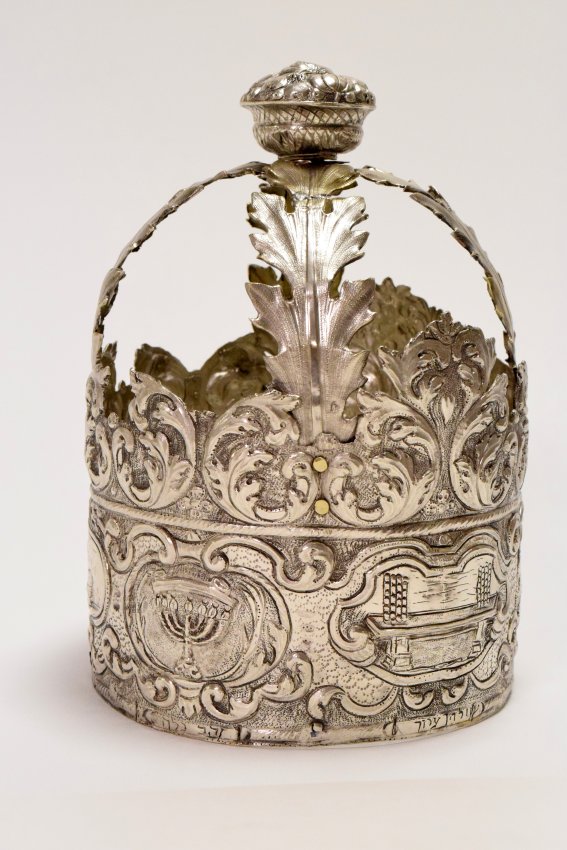Torah Crown (Keter)
Cast, repoussé, hammered and engraved silver, h. 7 ½ x w. 5 3/8 in.
Mantua, Italy, ca. 1810
Marks: R3 7329 (800/100 standard; in use in Italy 1810-1872), 7391 (Mantua), and SIC1
Gift of Joseph B. and Olyn Horwitz
B’nai B’rith Klutznick National Jewish Museum Collection, 2015.17.359
Torah finials evolved from knobs at the upper ends of the wooden staves on which the Torah scroll is wound. Because the design of the knob first resembled fruit, it was called a rimmon or pomegranate among Ashkenazic (German or Eastern European) Jews. Rimmonim in the shape of crowns were produced in Northern Italy in the 18th and 19th centuries. The crown form covers both of the wooden staves of the Torah. Six cartouches on the base of this crown enclose the following images with Hebrew inscriptions: a table with shewbread (consecrated bread for offering by the high priests in the Temple in Jerusalem); a menorah; manna; Mount Sinai with the Ten Commandments; an incense shovel; and a flaming altar. The upper open portion is formed of leaf-like silver bands. The finial, or knob, at the top is a 20th century replacement.
Publications:
In the Spirit of Tradition: The B’nai B’rith Klutznick Museum, ed. Linda Altshuler, 1987, cat. 114; p. 83, ill. p. 54
Winer, Todd, “Consumate Collector”, National Jewish Monthly, January 1989, ill. p. 36.

